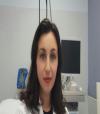Question: Hello, I am hoping you can provide some insight for me as I am really scared, and can't get my GI doctor to respond. Two weeks ago I had a contrast enhanced 3 phase CT of my abdomen. In January, I had a non-contrast CT that showed nodularity on my liver. Shortly afterwards, I developed mild URQ tenderness, and some nausea which is ongoing. The doctor I was referred to (and waited 6 weeks to see) also ordered an array of blood tests. I should also mention that I was diagnosed with fatty liver twelve years ago. Once the results were back, he had a nurse call me who referred me to two other physicians; one who specializes in
Liver Transplantation, and Cirrhosis, and the other who can do an EUS on an enalrged lymph node near my pancreas. No opinion was given, just "call these other doctors." The specialist cannot see me for two months! Can you tell me based on the results below, if I am seriously ill? Do I need to see someone sooner? I realize cirrhosis is serious, but is there any indication how far along this is? Nothing like this showed up on a CT scan one year ago.Hoping for some peace of mind. AFP tumor marker, hepatitis were all negative.
Comparison: CT scan 12/29/2013.
Contrast: 80 cc Omnipaque 350
Technique: The exam was made precontrast and in 3 phases postcontrast.
Findings:
Limited visualization of lower chest:
No
pulmonary consolidation,
pleural effusion or
pneumothorax.
Liver, gallbladder, spleen and pancreas:
There is
hepatic steatosis. Multiple small hepatic nodules identified,
similar to the previous study. These show mildly increased attenuation
relative to liver on precontrast imaging. No significant arterially
enhancing nodule is detected. The nodules become nearly isodense on
venous phase imaging. No rapid washout.
There is mild irregularity of the ventral margin of the liver. The
above findings may be compatible with cirrhosis.
There is no clear enhancement of the
umbilical vein to confirm
recanalization although mild prominence is noted.
Abdominal or pelvic adenopathy:
Mild right upper quadrant adenopathy is again demonstrated, not clearly
changed. The dominant node is peripancreatic and essentially stable,
14x25 mm compared to 17x28 mm previously. Other adjacent nodes also
appear stable.
Aorta and vascular:
No aortic ectasia.
Single left and duplicated right renal arteries.
Typical hepatic arterial anatomy.
Stomach, small bowel, colon and appendix:
Colonic diverticulosis. Previous partial descending colectomy.
IMPRESSION:
Hepatic morphology and enhancement pattern most likely represents
hepatic cirrhosis with a scattered regenerative/dysplastic nodules. The
increased attenuation nodules on noncontrast imaging are likely
siderotic. No abnormal enhancement to suggest HCC. While there is
significant overlap between imaging appearance of benign hepatic
nodules and well-differentiated HCC no focally suspicious lesion is
identified.







